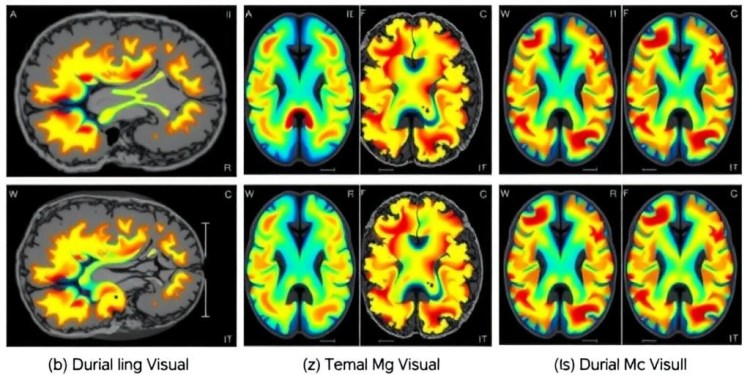A groundbreaking study has illuminated a crucial aspect of how the brains of individuals suffering from migraines and other forms of headaches respond to visual stimuli, revealing a failure to modulate sensory input as effectively as those without these conditions. Conducted by Daniele Piscitelli, an assistant professor of kinesiology at the University of Connecticut’s College of Agriculture, Health and Natural Resources (CAHNR), this research offers a significant advance in understanding the neural mechanisms underlying these pervasive headache disorders.
The findings, published in the peer-reviewed journal “Restorative Neurology and Neuroscience,” suggest that there may be an inherent neurological vulnerability in migraine sufferers, specifically in terms of cortical excitability—the degree to which brain cells respond to external stimuli. As chronic headaches affect over 1 billion people globally, these insights could pave the way for new therapeutic approaches aimed at ameliorating the debilitating effects of these conditions.
During the study, Piscitelli and collaborators initiated their inquiry while examining changes in cortical activity and neuroplasticity in stroke patients in Brazil. The researchers serendipitously discovered that similar techniques were being employed in studies focused on migraine pathophysiology. This revelation prompted them to expand their research to investigate the unique responses of the brains afflicted with migraines in the context of visual stimuli, ultimately focusing on the relationship between cortical excitability and headache disorders.
Participants for the study were divided into three distinct groups: those who experience migraines, individuals who suffer from other types of recurrent headaches, and a third group that served as the healthy control population, comprising individuals who have not experienced any form of headaches in the prior month. Each participant underwent rigorous testing to evaluate their cortical excitability, which serves as an indirect measure of brain activity and indicates how easily neurons can be stimulated.
Previous literature has demonstrated that individuals with migraines exhibit a higher threshold of cortical excitability compared to their non-migraine counterparts. This elevated responsiveness implies that the neurons in the brains of migraineurs are primed to react more readily to stimuli, making them susceptible to overstimulation and exacerbating their headache symptoms. The research team specifically honed in on the excitability of the visual cortex, responsible for processing visual information, and the motor cortex, which governs voluntary movement, aiming to compare the outcomes across different participant groups.
In the initial stages of measurement, the results revealed no significant variances in cortical excitability levels between the three participant groups. This finding urged the research team to delve deeper into the nuances of cortical responsiveness. Subsequently, participants were subjected to a pattern-reversal visual stimulation task involving a black and white checkerboard, alternating colors with each eye covered sequentially. Following this visual stimulus, the same excitability assessments were performed on both the visual and motor cortices.
What emerged from this phase was particularly striking: significant differences in visual cortex excitability became apparent between the groups. Both migraine sufferers and those experiencing other types of headaches exhibited increased levels of excitability in the visual cortex when compared to the healthy control group. The researchers noted that while healthy individuals demonstrated the capacity to modulate their cortical excitability post-stimulation, those with migraines and other headache disorders displayed a persistent elevation in excitability.
This parallel response in both groups, indicating a shared neurological foundation, sheds light on the broader implications of treatment strategies for headache disorders. The findings suggest that existing pharmacological treatments aimed at reducing visual cortex excitability, such as medications traditionally employed in the management of epilepsy, may hold promise for managing migraine attacks and recurring headache symptoms.
Reflecting on the study’s implications, Piscitelli emphasized the fundamental role of how the brain organizes and interprets sensory information as pivotal to understanding the underlying pathophysiological mechanisms at play in headache disorders. This insight could significantly influence future treatment modalities designed to mitigate migraine symptoms and the accompanying neurological disturbances.
Future inquiries grounded in these findings could explore the cortical excitability patterns in individuals experiencing seizures, drawing parallels with migraineurs to better understand the continuum of neurophysiological responses across different headache and seizure disorders. Ultimately, this research underscores the need for a basic understanding of brain responsiveness and modulation in order to develop effective interventions for individuals burdened by the weight of chronic headaches.
As more studies build on Piscitelli’s findings, they will not only enhance our comprehension of migraines and headaches but potentially improve the quality of life for millions of individuals suffering from these debilitating conditions. The journey of unraveling the complexities of the human brain continues, and with each discovery, we edge closer to the solutions that could one day provide relief for those affected.
Subject of Research: People
Article Title: Effects of Pattern-Reversal Visual Stimulation on Brain Activity in Migraineurs and General Population
News Publication Date: 15-Jan-2025
Web References: DOI link
References: n/a
Image Credits: n/a
Keywords: Migraines, Human brain, Sensory stimuli
Tags: brain activity and migraineschronic headaches global prevalencecortical excitability in headachesDaniele Piscitelli study findingsmigraine brain responsesneurological vulnerability in headache disordersneuroplasticity and migrainesresearch on migraine pathophysiologyRestorative Neurology and Neuroscience publicationsensory input modulation in migrainestherapeutic approaches for migraine treatmentvisual stimuli in migraine sufferers





